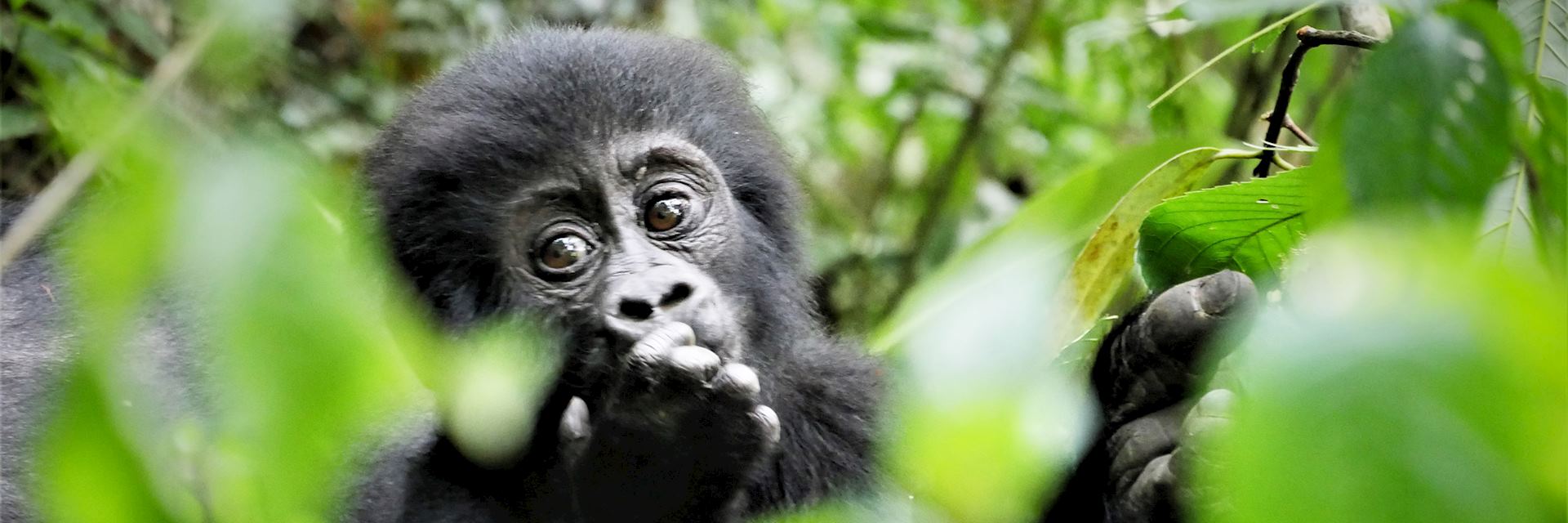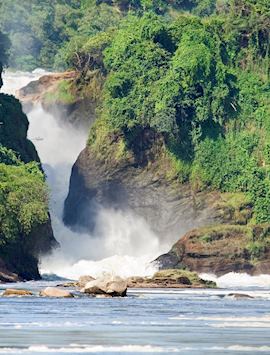In more than 20 years of creating trips, we’ve rarely heard a story as transformative as that of Rebecca Harvey. In July 2017, Rebecca visited Uganda with her 16-year-old son, Luke, to meet the country’s mountain gorillas. She was so moved by her experience that she decided to go back to university to get a masters in primatology and learn how she could help to conserve them. Earlier this month, we sat down to talk with her about her gorilla encounter.
What were you doing before the big trip?
I have a long-standing relationship with Audley, who have helped plan numerous trips for my family, which always typically have an element of wildlife. We’ve been to Belize, Canada, Thailand and Borneo. But, one trip I really wanted to do was to go and see gorillas. I’d just separated from my husband when I went on the trip with my son, Luke, who had just turned 16 (you have to be at least 16 to go).
I worked for a long time — 25 years — with the same company, a fantastic multinational where I’d done everything from marketing and communications through setting up a global volunteer programme. I was lucky to work for an employer who constantly gave me new challenges, but there’s a moment when you run out of road even with that. I’d reached the point where I thought, ‘What’s the next challenge?’
I was thinking about that when I went on the gorilla trek. I should say my undergraduate degree was in zoology so, by nature, I’m an observer of life and love studying animals. Going to see the gorillas was a combination of those things coming together. It was a large jab in the ribs and I thought ‘What are you doing, still working in an office? Why are you not doing this as a career? After all, life is not a dress rehearsal.’
Tell me about seeing the gorillas?
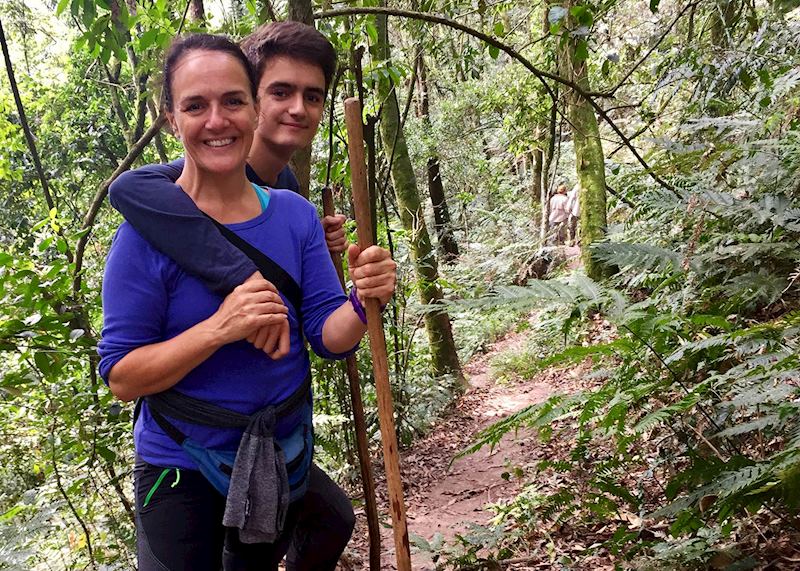
I love Africa and Uganda was the sixth or seventh African country I’ve visited. With Audley, we visited four different national parks. But the real reason I was there was to go to Bwindi.
I have to compliment the guides who look after the gorillas — they’ve really thought about the whole experience. The night before there’s an anticipation, you’ve got butterflies in your stomach, this is what you’ve been looking forward to for years.
Then you go down early in the morning for your briefing and you’re concerned about yourself. Am I going to be able to hike? Can I make it to where the gorillas are? Am I fit enough?
The guides make sure you understand the strict rules and the practicalities of the day. They also make sure you’re not ill. These populations are very fragile and any disease that we have, including the common cold, could be detrimental — they can catch it quite easily.
We were very lucky and only trekked for about two hours to reach the gorillas. Some people have to trek for four or five hours. Audley recommended we wear gardening gloves, which was excellent advice. You’re grappling thick undergrowth and it’s quite nettle-y and prickly.
When we got near the troop, the guides said ‘Okay, they’re around the corner’, and we dropped our bags with the porters and took just our cameras into the clearing.
The guides timed our arrival to coincide with when the gorillas had just finished eating and we were warned that they’d all be in the trees. I remember thinking ‘Are you sure they’re going to come down?’ At first, all you can see is this big black blob up a tree, and not the nice end either.
But then, one by one, they started coming down. A big blackback, then the mums and their young ones, and then the silverback arrived. You think they’re all so big until you see the silverback. He’s so impressive — the muscles and the size of his head and his different shade of fur. There’s a remarkable presence about him.
We’d been briefed on the distance we needed to keep — about 7 m (23 ft). But no one told the gorillas that. The adults didn’t interact, they were resting after eating. But the juveniles are incredibly curious and inquisitive and this was playtime. I’m anthropomorphizing, but they started sussing us out, then they looked at mum as if to ask ‘Is this ok?’ Gradually, they started coming nearer and nearer. One started tugging at the shirt of the one of the ladies like ‘What is this?’
An older juvenile started creeping toward my son, who was just in front of me. I’m interpreting here, but it could be that Luke was the youngest person the gorilla had ever seen — they don’t take children under 16 and Luke had just turned 16. And the rest of our group were more my age. He seemed to sense that this was another young one.
The gorilla crept right up to Luke, looked him in the eye and then tentatively held his gloved hand, sniffing it. While I wouldn’t recommend this (the guide thought it had gone too far and shooed the juvenile away), that moment of intimacy was absolutely magical.
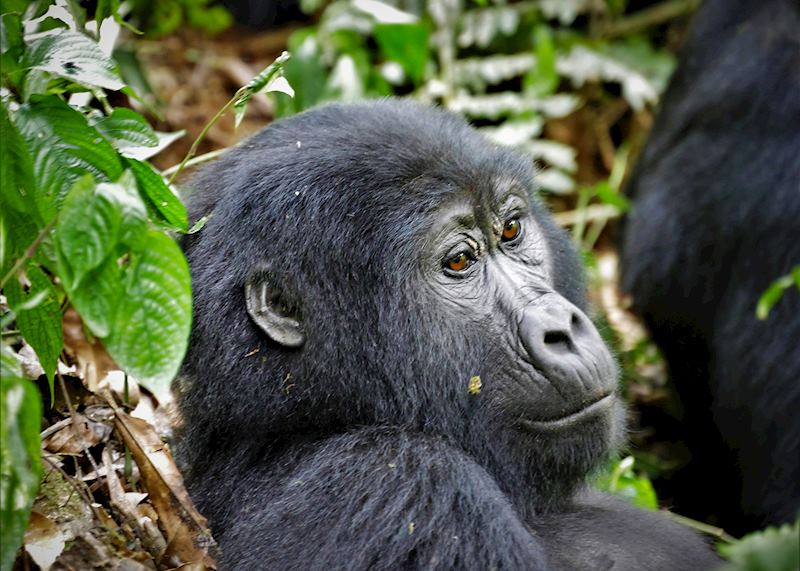
Then what happened?
I came back from that epiphany moment in Uganda, from sitting with the gorillas, and I started researching primatology courses. This is where things started coming together — there’s a university that does a fantastic primatology course within cycling distance of my house. I still have commitments, two teenagers who live with me, and I couldn’t just run off to another part of the country to study.
So I went to speak with the supervisor, Stuart. I was scared, I was about to take a massive leap, something people would call crazy or wild. But Stuart put my mind at rest. In fact, he was very supportive for someone with my background and experience to move into conservation. He’s my advisor now.
The stars aligned, really, in all of this. You think there are barriers and then when things start lining up, it’s much easier to make the switch.
What is it exactly that you’re researching?
I’m getting a master’s degree in research — it’s like a normal master’s degree, but the largest component is to do a piece of your own research.
The focus of my research is to understand more about the visitor experience when people go to see the great apes. What are the critical components behind the eco-tourist experience, and how does that differ between gorillas, chimps and orangutans, as well as versus other animals? How can we make it more sustainable and how receptive are visitors to then supporting conservation? And what does that lead to in terms of conservation?
I was supposed to go to Borneo to study just one visitor experience, but that fell through. So I reached out to Audley to see if they’d contact their customers visiting the great apes to see if I could interview them.
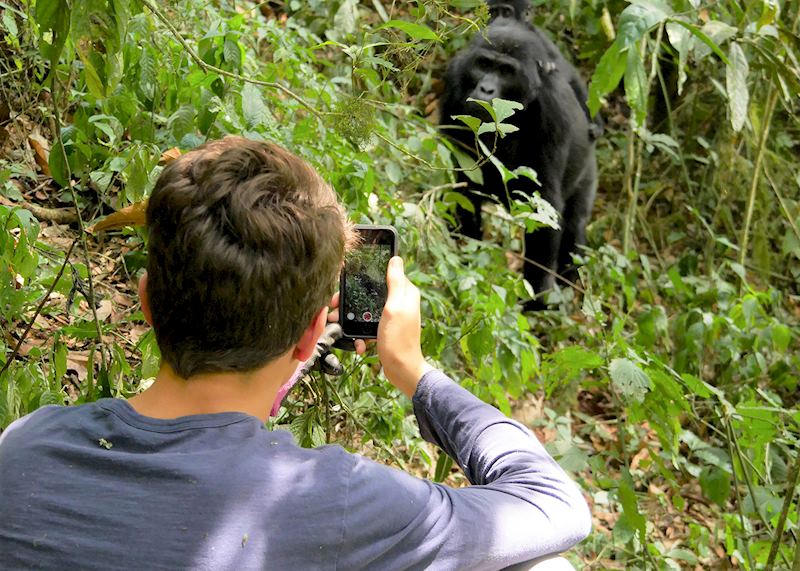
Everyone who agreed to help has been so incredibly generous with their time. I really want to say thank you. I told them it would probably take just 20 minutes but the shortest conversation I had was about 45 minutes. Everyone is really passionate. And the Audley sustainability team has really been very supportive and I think they’re eager to learn more too.
To make ecotourism sustainable, visitors need to want to keep coming. If we don’t really understand what the crucial elements are that make the best experience, it could get eroded over time. If people stop going, the money will stop coming in, and ultimately the money it brings for conservation.
How do we get the balance between low impact on the animals and an incredible visitor experience so that it can keep going? That’s what I’m hoping to find out.
What can people do to help?
The main thing that I can suggest is to experience it for yourself, and while you’re out there ask questions around conservation. Even if the efforts are excellent, I’m finding that the information isn’t always there when you go on trips. Be inquisitive and ask questions of the guides, but also ask yourself: ‘What could I do to help these great apes?’
In a global economy we can do a lot with our buying power. People are becoming increasingly aware of palm oil — production of non-sustainable palm oil is a major contributor to the deforestation that’s endangering primates around the world. It’s labelled in a lot of food and detergents here in the UK, but how can we become more demanding consumers? How can we use more sustainable palm oil?
The World Wildlife Fund says we should keep using it, it’s a highly productive oil and uses less land than others. But we need to make sure we use it from sustainable sources. There’s a great scorecard on the WWF website and you can check for yourself to ensure that the brands you use are very good at using palm oil from sustainable sources.
But, I think that the most important thing is to understand that if we don’t take responsibility, in the future, these majestic animals won’t be there.
Read more about trips to Uganda
Start thinking about your experience. These itineraries are simply suggestions for how you could enjoy some of the same experiences as our specialists. They’re just for inspiration, because your trip will be created around your particular tastes.
View All Tours in UgandaWas this useful?


